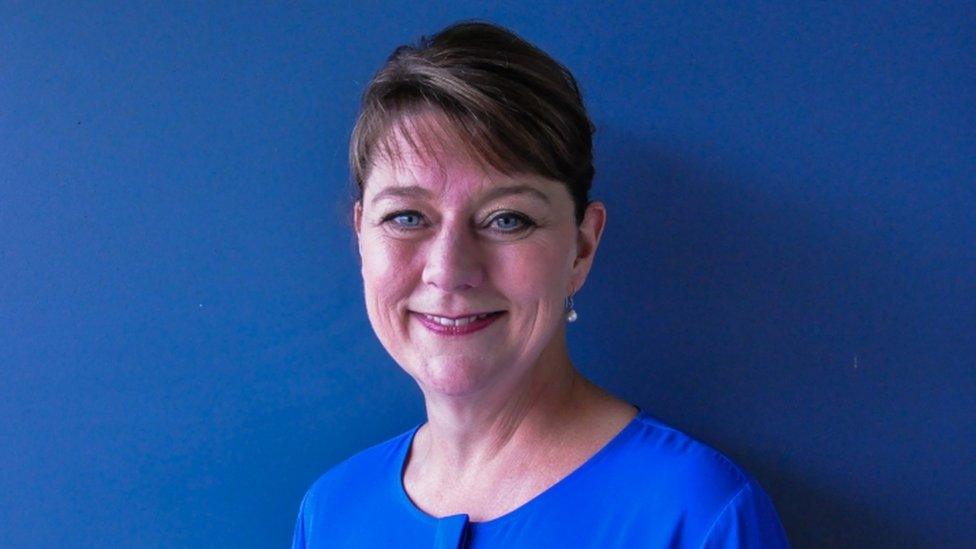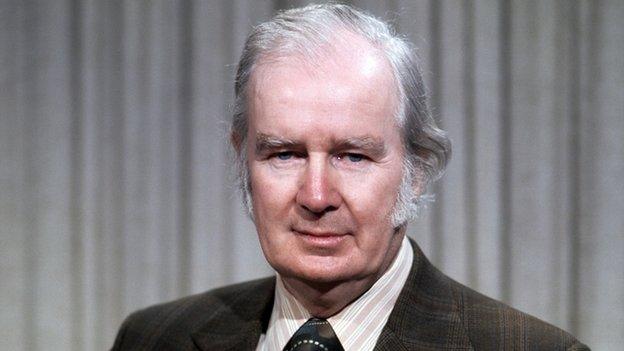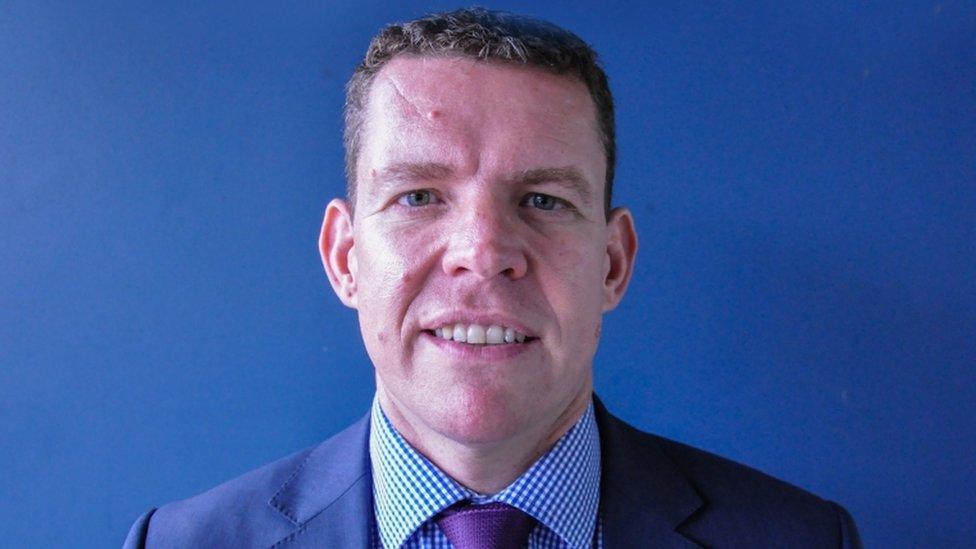Guide to the parties: Plaid Cymru
- Published

Plaid Cymru, which sees itself as a left-wing party aiming to increase economic prosperity and social justice in Wales with independence as a long-term aim, will be hoping to add to its three MPs in Westminster.
Potted history:
The Party of Wales was established in 1925, but it had to wait until 1966 for its first electoral breakthrough, when party president Gwynfor Evans won Carmarthen in a by-election.

Gwynfor Evans, who became Plaid Cymru's first MP in 1966
But Plaid Cymru struggled to build substantially on that success and has never won more than four seats at Westminster.
Its electoral fortunes improved after the narrow vote in favour of devolution in the 1997 referendum which led to the creation of the National Assembly for Wales.
Although it once served in a governing coalition with Labour in Wales, it currently sits in opposition with 11 AMs.
Plaid Cymru contested the 2015 general election at a time when its sister party, the SNP, was enjoying unprecedented power - something Plaid aspires to replicate in Wales.
Where are they now?
Plaid currently has three MPs. A consistent performance in the 2015 election meant it retained the same three seats it won in the 2010 general election.
As of July 2016, Plaid had 8,273 members.
Key players:
Leanne Wood: she's the first female leader in the party's history and her election was seen as a sign of Plaid's desire to build new support in urban and industrial parts of Wales.
Under Wood, who is learning to speak Welsh, Plaid's emphasis has not heavily been on independence after opinion polls suggested only modest support for it.
As such, much of Plaid's campaign in 2015 focused on alternatives to austerity and a call for Wales to get the same level of spending on devolved services per head as Scotland.
There was speculation after the 8 June general election was called that Wood would stand in the Rhondda, but days later she ruled herself out.
In this campaign, Wood has attacked Labour over its divisions and will be hoping to attract pro-EU voters.

Rhun ap Iorwerth has been tipped as a future leader
Other key players are Adam Price, a former MP and sitting AM who is co-ordinating the party's general election campaign.
Meanwhile, Ynys Mon AM Rhun ap Iorwerth is the party's director of communications. Both he and Mr Price have been tipped as future leaders of Plaid.
Hywel Williams, Plaid Cymru candidate in Arfon, is the party's leader in Westminster. Gareth Clubb is the party's chief executive.
Leader's philosophy in a quote:
"If the dark clouds of Tory rule lurk on the horizon, then Plaid Cymru is the ray of hope."
What the critics say:
"We want to ensure that Britain is a more secure and united nation - that means acting against the extremists who want to divide us but it also means standing up to the separatists who want to break up this precious union of nations," Theresa May, prime minister.
What do they hope to achieve?
Plaid will be hoping to hang on to their existing three seats, and is focused on a further six where the party thinks it can perform well.
The party is hoping to take the Labour-held seats of Ynys Mon, Rhondda, Caerphilly, Blaenau Gwent and Llanelli - as well as the Liberal Democrat-held seat of Ceredigion.
Plaid's best hope is Ynys Mon - the Isle of Anglesey, where former Ieuan Wyn Jones will be standing. In 2015 Plaid fell just short of gaining the seat from Labour by 229 votes.
Seats that could shape Wales' general election
Wood wants to send the "largest number of Plaid MPs possible" to Westminster, and if she falls short, she says she's will not resign.
"I've got a long-term project. It's building quite well and I want to see it through," she says.
Strong suit?
Leanne Wood argues that only her party can protect Wales against what could be a dominant Conservative government, citing what she says is falling support for Labour. In the 2017 local elections Plaid gained 33 seats, while Labour lost 107, although it remained the biggest party in Wales.
Where do they stand on Brexit?
Plaid Cymru, which campaigned to stay in the EU, says it accepts that the people of Wales voted to leave, but says single market membership should be preserved to protect Welsh jobs.
As in England, the majority (52.5%) of voters in Wales voted to leave the European Union.
In January, Wood and the Welsh First Minister Carwyn Jones jointly published a white paper setting out Wales' plans for Brexit.
At its heart were proposals for "continued participation in the single market" as well as a "balanced approach to immigration linking migration to jobs".
Other demands included "a fundamentally different constitutional relationship between the devolved governments and the UK government" as well as "proper considerations of a transitional agreement."
Five key policies:
Protect Wales's economy, identity, and the Assembly from a Conservative power grab
Ensure every penny that is lost from Europe as a result of Brexit is replaced by Westminster
Build new hospitals, schools, roads and railways funded by a multi-billion pound investment programme
Pioneer a new Health and Social Care Rescue Plan
Forge a Free Trade Deal Shield for Wales protecting core industries and agriculture sector